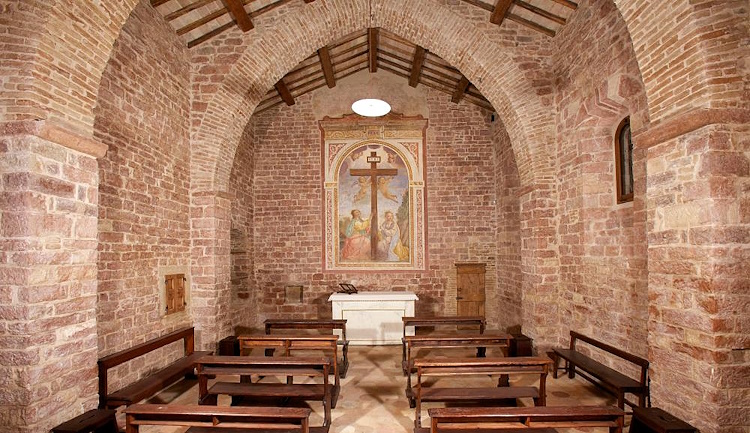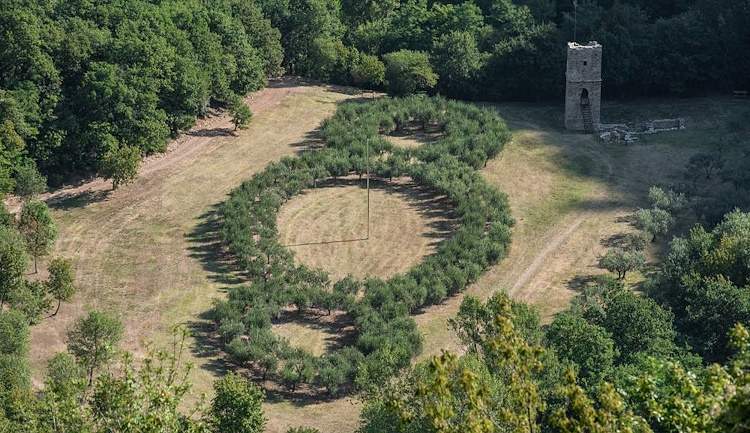An enchanting path immersed in nature, traced in the heart of the place that was the home of Italy’s patron saint, St Francis, and where he and his companions founded the Franciscan order.
The Bosco di San Francesco near Assisi offers a unique experience of peace and beauty surrounded by nature. Extending over 64 hectares with a history spanning 800 years, inside is a fascinating journey through hornbeams, oaks, woodlands, cultivated fields, ancient and modern man-made works.
It can be reached either from the centre of Assisi via the one-and-a-half kilometre long path, which starts just outside the square in front of the Upper Basilica and descends to the valley, or from the lower entrance at the former monastery of Santa Croce, from where a second ring-route starts, in the interior about two kilometres long.
Thanks to the efforts of the FAI-Fondo Ambiente Italiano, the Bosco di San Francesco has been open to visitors and pilgrims since 2011. After careful restoration, the forest has been transformed into an authentic treasure trove of biodiversity, with woods, meadows, streams and olive groves that are home to numerous plant and animal species. Walking along its paths, it is possible to observe roe deer and squirrels or listen to the songs of numerous birds.
Watchword: slowness
In the woods along two paths, one immerses oneself in the hilly Umbrian landscape and experiences slowness and contemplation.






























